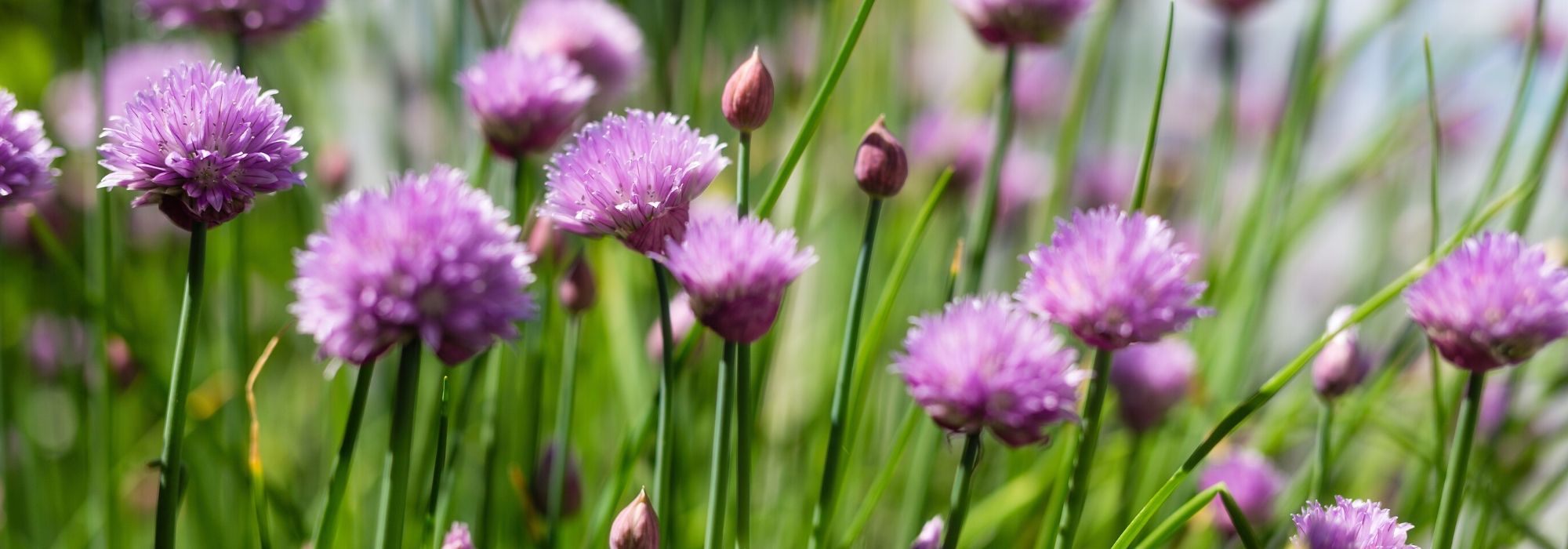
Chives: planting, sowing, dividing
Contents
Chives in a nutshell
- Chives are one of the most popular herbs
- They form clumps of long, dark green aromatic leaves, with a sharp taste of fresh onion or garlic
- Their stems enhance many dishes
- Lilac chive flowers are charming and also edible
- Very hardy, almost foolproof, as lovely as it is delicious, it can be grown in pots or in the ground
A word from our expert
Chives are among the most popular herbs! This aromatic plant is highly valued in cooking for its fine foliage with a fresh, garlicky, and slightly spicy taste. Flowering chives, with their purple or white pom-poms depending on the variety, offer a charming display in summer!
Known by various names, including “Chinese chives”, “cive”, “cébette”, or “false shallot”, there is much confusion surrounding common chives (Allium schoenoprasum), which is the most cultivated species in our gardens. Indeed, it should not be confused with Allium tuberosum, Chinese chives, also known as “Chinese chives” or “Thai chives”, which have a stronger garlic flavour and flat leaves, nor with Allium fistulosum or cive, whose small white bulbs are consumed like spring onions. Allium oleraceum is the wild chive that can be found spontaneously in nature and is equally aromatic.
This nearly foolproof plant requires little maintenance and can be grown in the ground in the vegetable garden, in an herb garden, in pots on a balcony, and even indoors in the kitchen. It also makes an appearance in ornamental gardens, where it will deter aphids: it is therefore also a top-notch companion plant!
How to sow chives, how to cut and store them, when to divide chives? Here are all our tips on this lovely and delicious aromatic plant!
Description and Botany
“`html
Botanical data
- Latin name Allium schoenoprasum, A.fistulosum, A. tuberosum
- Family Amaryllidaceae
- Common name Chives, Chinese chives, scallion
- Flowering June-July
- Height 0.15 to 0.60 m
- Exposure sun, partial shade
- Soil type rich and light, cool
- Hardiness -15°C
Chives, also known as scallion or false shallot, is a bulbous perennial herb from the Amaryllidaceae family, which includes garlic, onion, shallot, and leek. It is native to temperate regions of the Mediterranean basin, East Asia, and Western Europe.
The genus comprises about 750 species, including Allium schoenoprasum, the common chive or civet, which is the most cultivated in France and features purple or white flowering depending on the cultivars. Its bulb is not edible. It can be found wild in the moist lawns and rocks of the Ardennes, Burgundy, the Jura, the Alps, the Cévennes, the Massif Central, the Pyrenees, and Corsica. There are two other closely related and common species:
- Allium tuberosum, known as Chinese chives, also called garlic chives, tuberous chives, or Chinese garlic, has a stronger garlic flavour and flat leaves.
- Allium fistulosum, known as scallion, spring onion, or Spanish onion, produces very small edible white bulbs along the stem, resembling small leeks.
Chives form upright clumps of long, linear, finely aromatic leaves, reaching heights of 0.25 to 0.70 m and spreading about 20 cm. They take some time to establish. The foliage consists of long, hollow, cylindrical or ribbon-like leaves, depending on the species, which are very acute at the tip and will be evergreen in regions with mild winters, allowing for year-round consumption. Allium fistulosum has larger and thicker leaves than common chives, while Chinese chives develop flat leaves.
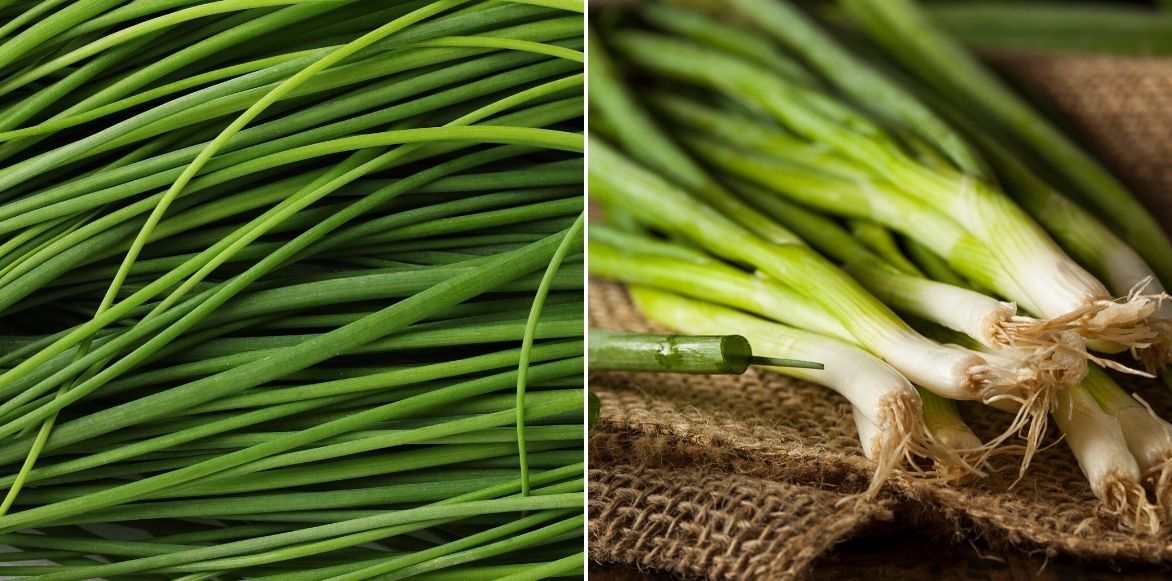
Leaves of chives (Allium schoenoprasum) and scallion (Allium fistulosum)
Dark green to grey-green, finely aromatic, the subtle flavour of its stems is reminiscent of fresh onion or garlic.
From late spring to late summer, depending on the climate, these slender stems bear spherical umbels of 2 to 5 cm at their tips, resembling small pom-poms. Each solitary inflorescence consists of numerous small tubular star-shaped flowers, sometimes fragrant. They are surrounded by a large bract. Depending on the cultivars, the petals are violet-pink, sometimes soft pink in Allium schoenoprasum ‘Rising Star’, or pure white in Allium schoenoprasum ‘Corsican White’. They are striped with a central violet or green line. Chinese chives have white flowers with 6 pointed lobes and a yellow-green throat.

Different types of flowers: Allium schoenoprasum and the variety ‘Corsican White’, Allium tuberosum and Allium fistulosum
The flower buds and flowers are also edible.
These light umbels attract bees and other beneficial insects throughout the summer, while its garlic scent repels aphids and prevents certain diseases. After flowering, chives produce black seeds that can be sown.
They have been cultivated since antiquity in Asia and in our gardens since the 16th century.
“`
Read also
Create a spiralled herb garden.Main species and varieties
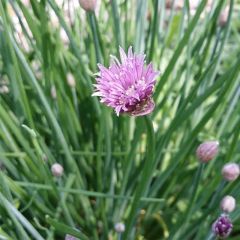
Common Chives
- Height at maturity 30 cm
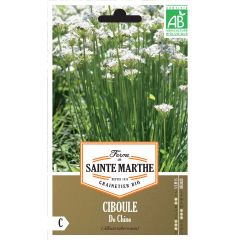
Garlic Chives - Ferme de Ste Marthe Seeds
- Height at maturity 30 cm
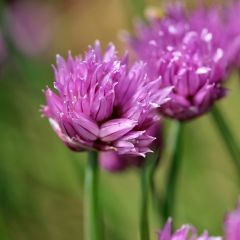
Chives - Allium schoenoprasum
- Height at maturity 30 cm
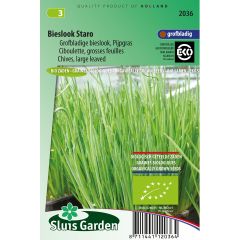
Chives Large-leaved Staro
- Height at maturity 30 cm
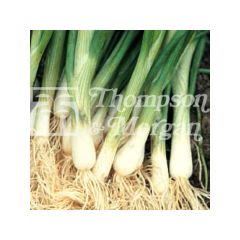
Spring Onion Performer - Allium fistulosum
- Height at maturity 30 cm
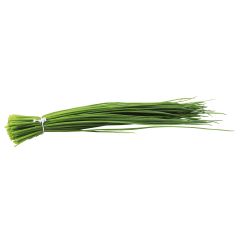
Chive plants - Allium schoenoprasum
- Height at maturity 30 cm
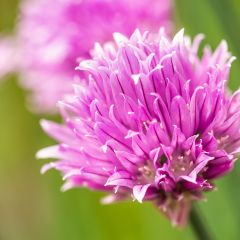
Organic Chives plants - Allium schoenoprasum
- Height at maturity 30 cm
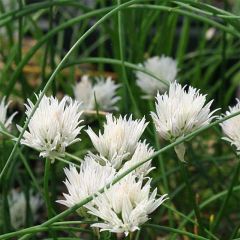
Allium schoenoprasum Corsican White
- Flowering time June, July
- Height at maturity 30 cm
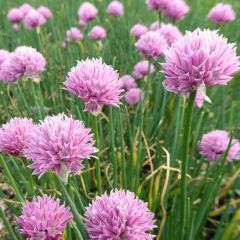
Allium schoenoprasum Rising Star
- Flowering time June, July
- Height at maturity 20 cm
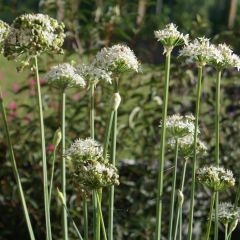
Organic Chinese Chives - Allium tuberosum
- Flowering time September, October
- Height at maturity 60 cm
Discover other Chives
View all →Available in 1 sizes
Available in 1 sizes
Available in 2 sizes
Available in 1 sizes
Available in 1 sizes
Available in 1 sizes
Available in 1 sizes
Available in 1 sizes
Available in 1 sizes
Available in 1 sizes
Sowing and planting chives
Where to plant or sow?
Very hardy, chives can withstand temperatures down to -20 °C and can thrive almost anywhere. In regions with cold winters, it may die back but will re-emerge the following spring. It can be grown both in pots and in the ground. You can even grow a chive plant indoors all year round in the kitchen, provided it receives plenty of light. It prefers full sun but can tolerate partial shade, in light, cool, well-drained, moderately rich soil. It is ideally planted in full sun for spring harvests and in partial shade for summer harvests. It self-seeds readily.
Chives are a staple in herb gardens but can also be planted in the garden at the base of roses, for example, or in cottage garden beds, borders in the vegetable garden, or pathways. They integrate easily into a pocket garden. They also thrive in pots or window boxes on a windowsill, terrace, or balcony.
When and how to sow?
Chive seeds are sown from February to June for a harvest from May to September. You can sow them directly in place from April to May after the frosts, depending on the region. You can also sow them under cover (indoors or in a greenhouse) from late February.
Under cover
- In a perforated seed tray filled with seed compost, sow the seeds 2 to 3 mm deep, spacing them 5 to 7 cm apart
- Water gently until germination
- When your young plants have 4 leaves, transplant 3 or 4 into pots to be planted in the garden in autumn or the following spring
In the ground
Wait until the soil is well warmed. Chive germination occurs at around 18 °C.
- Trace a furrow 1 to 2 cm deep
- Sow the seeds and cover them with a thin layer of compost
- Water gently and keep the soil moist until germination, which takes between 20 and 25 days
- Thin out to 30 cm between rows and 15 cm between each plant
In pots
You can also sow chives directly in pots or window boxes.
- Place a layer of clay balls at the bottom of a perforated container
- In compost, sow a few chive seeds on the surface
- Thin out when the plants have 4 to 5 leaves, keeping only 2 to 3 plants per container
- Place in full sun and sheltered from the wind
- Water regularly
Read also our tutorial: How to succeed in your chive sowing, in pots or in the garden?
Planting chives
You can plant our chive plants sold in pots from spring to summer, after the frosts, for a harvest from May to September.
In the ground
The soil should be rich and well-drained; good garden soil is sufficient, but if not, add compost and sand at planting. A heavy soil should be lightened with sand to prevent saturation.
- Soak the root balls in a basin of water before planting
- Clean and loosen the soil deeply and enrich it with compost
- Dig a hole two to three times larger than the root ball, spacing the plants 20 to 40 cm apart in all directions
- Place the root balls, keeping the collar level with the soil, and fill in
- Firm the soil
- Water to ensure establishment
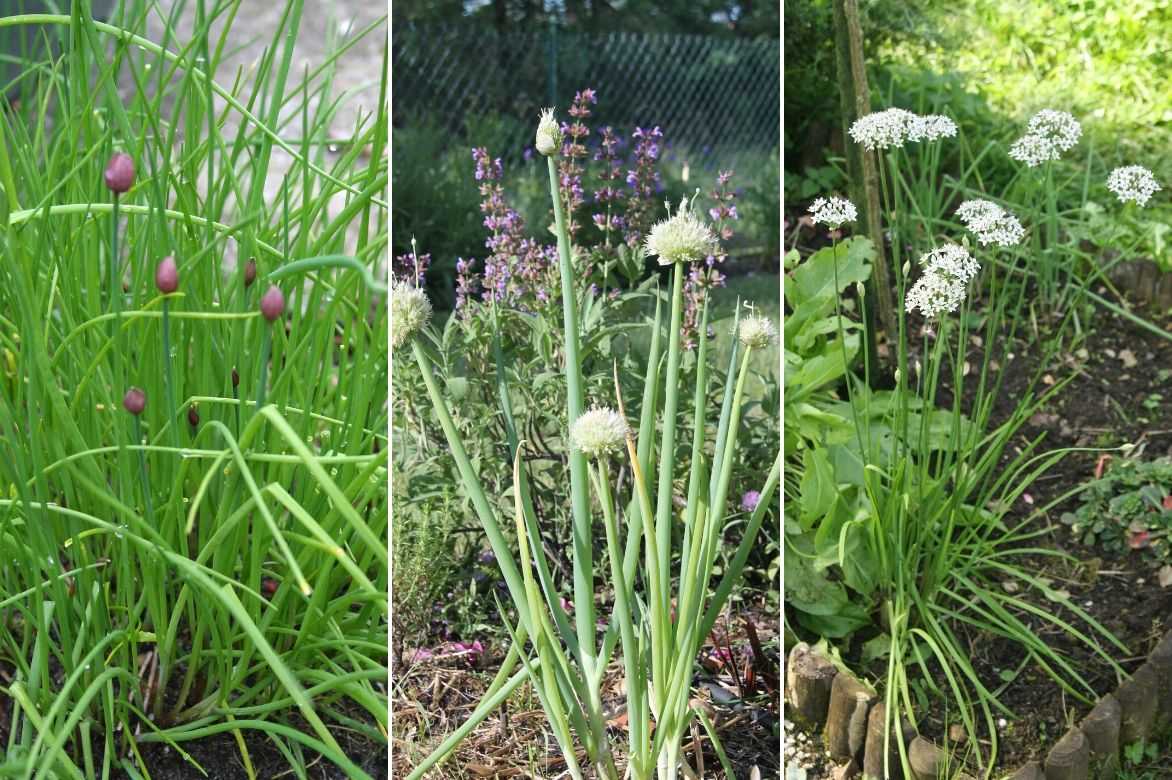 Chives and scallion in the garden[/caption>
Chives and scallion in the garden[/caption>
In pots
- Plant the chive plants in a perforated container
- Place a layer of clay balls at the bottom of the pot or window box
- Fill with garden soil mixed with a bit of compost and some river sand
- Water regularly but do not let water sit in the saucer
Read also
Sowing of aromatic plantsHarvesting and Using Chives
Harvest:
The harvest of Chives spans a long period, from late spring to autumn depending on the planting or sowing dates. Fresh leaves are harvested as needed simply with a pair of scissors, cutting the stems at the base of the clump.
Storage:
Chives are best consumed freshly picked as they lose some of their flavour with drying or freezing. The stems can be stored for a few days in the refrigerator, wrapped in slightly damp absorbent paper or placed in a glass of fresh water. However, you can also preserve them for a few months by drying or freezing (about 6 months) in small plastic bags after washing, drying, and chopping them.
Usage:
In cooking, the fresh, garlicky, and slightly spicy taste of chives enhances many dishes. Rich in vitamins A, B, and C, as well as minerals, chives are also digestive and appetising. Once chopped, their leaves complement omelettes, salads, stuffing, savoury tarts, cottage cheese, or fresh cheeses. The bulb of common chives is not edible, unlike that of Welsh onion or ciboule (Allium fistulosum), which can be cooked like white onions, either raw or cooked. It is used to flavour rabbit and hare, hence the name “civet.” The flowers can be consumed fresh sprinkled on a salad, and the flower buds can be preserved in vinegar and used as a condiment.
→ Learn more with our tutorial: How to harvest and store chives?
Maintenance and Care
Chives require very little maintenance. They are one of those easy-going herbs. In case of high temperatures or prolonged drought, provide them with some watering; they enjoy the sun but also prefer the soil to remain cool. In pots, more regular watering is necessary: water as soon as the soil is dry on the surface. To reduce watering, we recommend mulching the soil with thin successive layers of clippings to retain moisture in summer and limit weeding.
In autumn, if necessary, apply well-matured compost by scratching it into the base of your plants to a depth of 5 cm.
Regularly remove flower buds and flowers (keep 1 flower out of 2 for your salads) to prevent the plant from going to seed. About once a month, trim the clump to encourage new foliage and obtain fresh leaves. In the coldest regions, in autumn, cut back the faded clumps; they will reappear the following spring.
Every three years, rejuvenate old clumps by dividing them.
Diseases and potential pests
The chrysomelid and aphids sometimes colonise chives. Chrysomelids are small beetles whose larvae nibble on leaves and flower buds: as a preventive measure, collect adult chrysomelids before they lay eggs to contain the invasion.
It fears yellowing leaves and bulb rot in cases of excess moisture: in pots, do not allow water to stagnate in saucers; in the garden, ensure proper drainage.
Against aphids: make sprays of water mixed with 5% black soap. By attracting aphids, it prevents black spot disease in roses: plant it nearby.
Its strong scent repels pests.
Multiplication
Multiplying chives is very easy; it can be done by sowing (see above) or by dividing clumps, from March to May or from September to October. Perform this every three years on the oldest stumps. This allows you to quickly obtain beautiful clumps.
- Use a spade to lift the clumps out of the ground
- With the edge of the spade or a knife, divide pieces that contain many roots
- Replant immediately in well-loosened soil free of stones, roots, and weeds
- Add well-decomposed compost
- Space the pieces about 30 cm apart
- Water regularly to aid recovery
If you wish to grow them in pots, plant the pieces in garden soil mixed with a bit of potting compost.
→ Check our advice sheet to succeed in multiplying your chives with a few simple steps.
Associate
Dotée de propriétés répulsives et mellifères, chives are an excellent companion for many plants in both the vegetable garden and the ornamental garden.
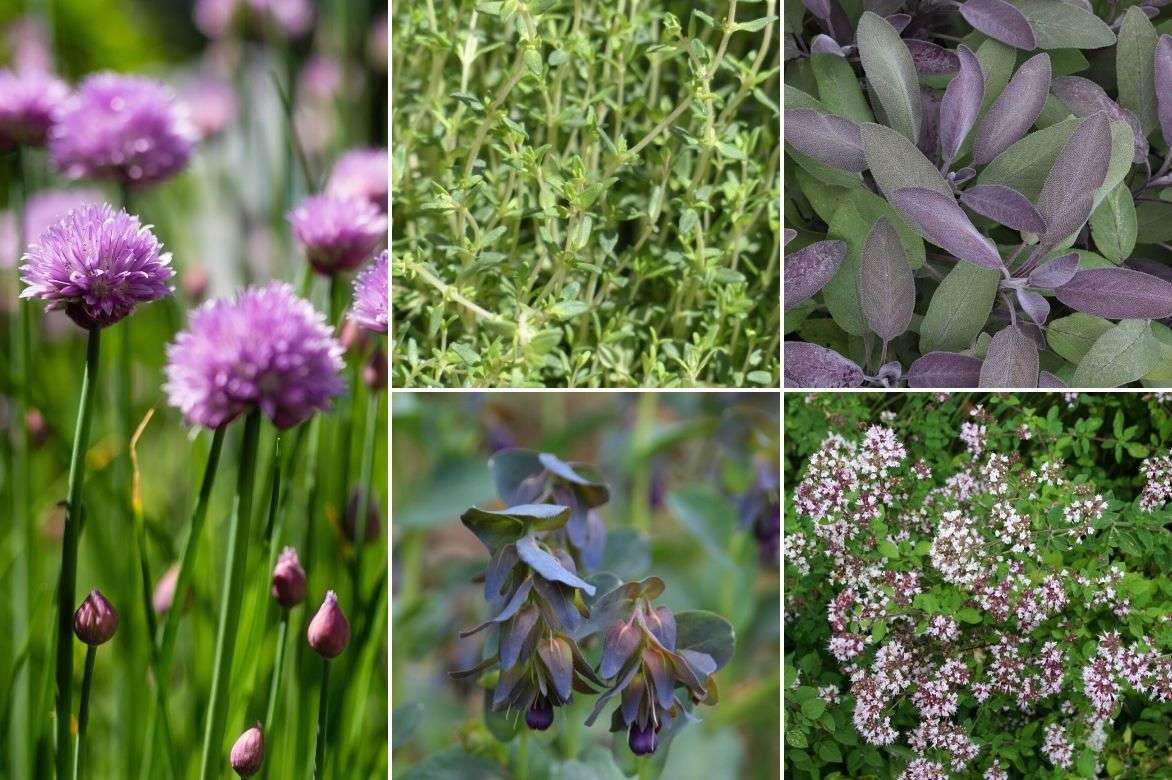
An example of association in a herb bed: Chives, Thyme, Purple sage, Cerinthe, and Oregano (Marjoram)
In the vegetable garden, among vegetables, it thrives next to carrots and cucumbers, protecting them from the fly, as well as celery, gherkins, tomatoes, radishes, and Swiss chard. It does not appreciate the company of beans, peas, broad beans (family Fabaceae), or cabbages. On the edge of the vegetable garden, it will neighbour thyme and creeping thyme. It also integrates easily into a vicar’s garden, in a bed of good herbs with other aromatic plants such as chervil, basil, fennel, parsley, dill, mint, or coriander, or you can create a spiralled herb garden.
With its fresh and graphic silhouette, it easily finds a place in natural gardens, in herbaceous borders, a mixed border, or a beautiful edge, at the foot of roses for example, where it will protect them from aphids.
Useful resources
- Discover the finest collection of herb seeds to season your seasonal dishes!
- The most beautiful selection of 15 medicinal plants with numerous benefits… to grow in your garden can be found in our nursery!
- It’s easy to succeed with the sowing of aromatic plants by following our tips!
- Advice sheet: Succeeding with chives in a pot
- Subscribe!
- Contents
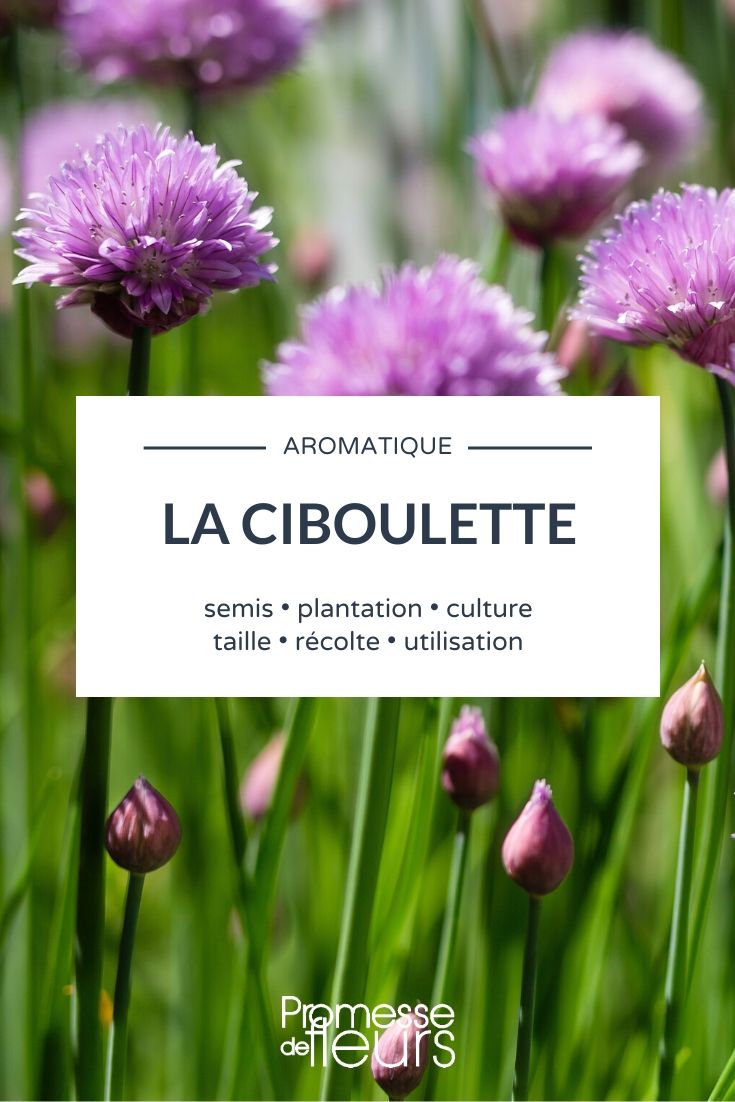
































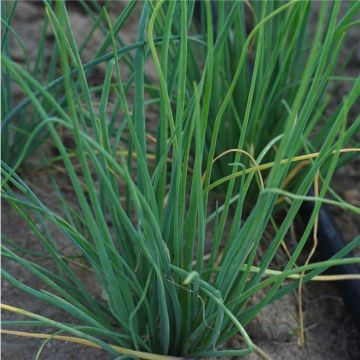
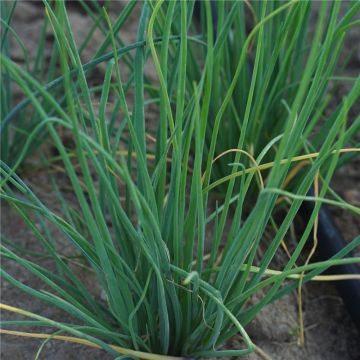

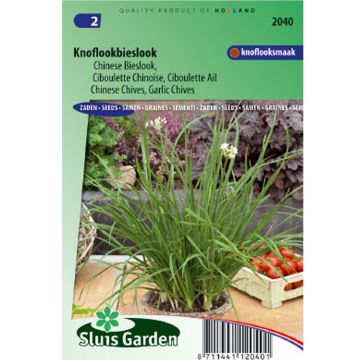
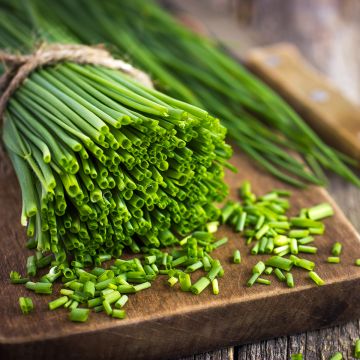

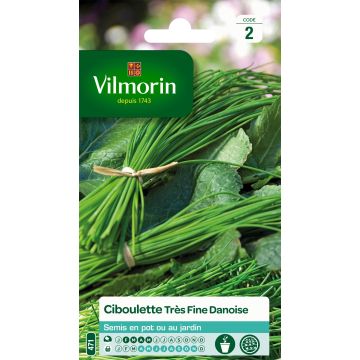

Comments